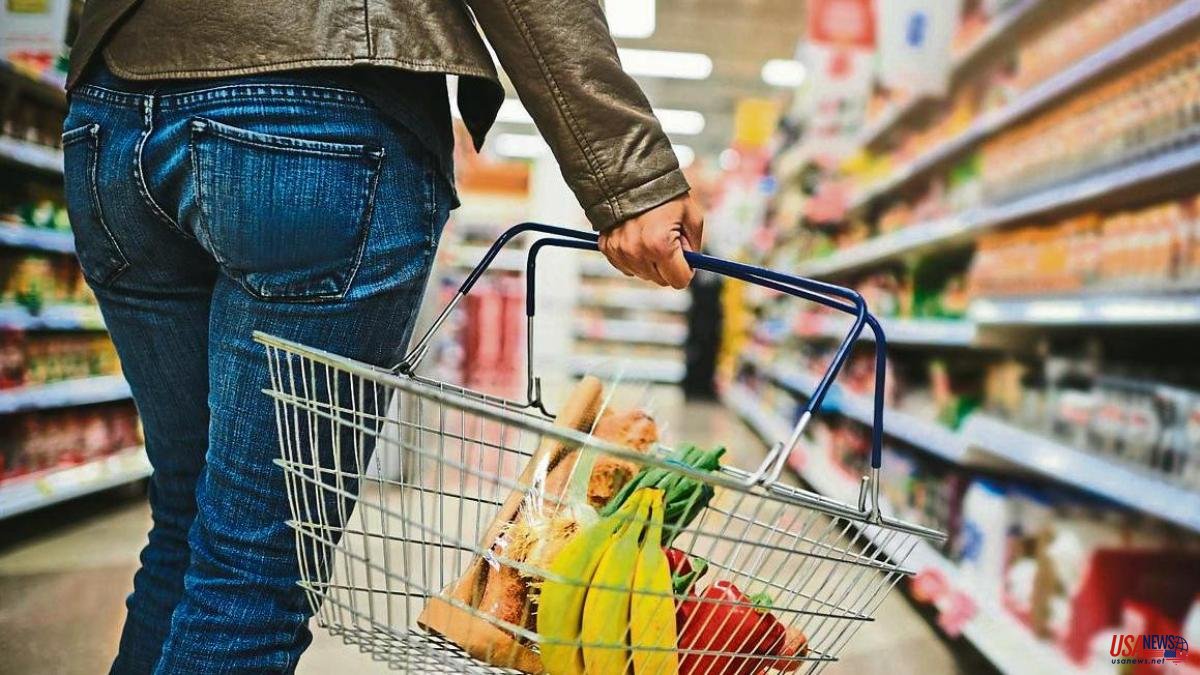If we could go back in time a year and we had 50 euros to make the purchase (it is the average ticket according to the IRI barometer), we would leave the supermarket with a more abundant basket than now. Food inflation has been above 10% for five months and in August it reached the highest rise since 1994, making it increasingly expensive to cover essential needs.
With these 50 euros, a family could buy a kilo or a liter of thirteen basic products last year – see the attached graph. To prepare this basket, we have taken as a reference the average sale price per kilo or liter of the products most consumed by Spaniards in 2021, which is included in the Report on food consumption in Spain, prepared by the Ministry of Agriculture and Food. We have analyzed what we could buy with 50 euros, and the result is the thirteen foods mentioned: olive oil, pasta, eggs, milk, chicken meat, fresh fruit, bread, coffee, rice, legumes and vegetables, fresh fish, potatoes and breakfast cereals. A kilo or a liter of each of them.
We return to the present, to September 2022, and the 50 euros no longer spread in the same way. Buying all this food would now cost 12% more, that is, 55.98 euros. The increase is calculated as follows: as it is the average price of each food in 2021, we have made the average of the CPI for the first eight months of this year for each of them and we have applied it to the starting price.
A liter of olive oil, for example, cost 2.87 euros on average in 2021. In January 2022, this food rose by 30.10% year-on-year according to the INE; in February, 30.6%; in March 32.9%; in April, 42.5%... As of this month, the year-on-year increase decreases month by month, reaching 13.2% in August (latest data available). Thus, the average inflation of olive oil from January to August was 28.74%. Therefore, if a liter cost 2.87 euros on average in 2021, it would now be worth 3.69 euros.
That's why 50 euros are for less in the supermarket. We can no longer buy these thirteen basic products and we would have to leave some of them out of the basket. Or we give up chicken and fruit, or coffee, or fresh fish... Whatever, but the variety and quantity of the basket have to be reduced yes or yes in case we don't have more money. And that it is a basic basket, without great luxuries. Unless coffee or cereals are considered one of them. Following the nutritional recommendations and eating a varied diet has a price, undoubtedly higher than months ago.
After a year, the household budget is irremediably weighed down by this increase in prices. In addition, in the case of food, saving is not easy, especially for people with fewer resources, as shown by the latest private spending data from CaixaBank Research. The most humble people are the ones who increase their spending on food the most because private labels and cheap supermarkets have also raised prices and it is difficult to find even cheaper alternatives.
“We have to keep eating; people can give up buying a new shirt, but not food, ”says Alberto Iglesias, director of analysis at the specialist distribution consultancy Nielsen IQ. Consumers are responding to rising prices with different strategies. The main one, says Iglesias, is the detailed study of spending. The shopping basket has become a bobbin lace for part of the population, which is looking for more white label – refuge in all crises – and promotions, comment from Nielsen IQ. "The indulgence or more expensive products are the first to jump off the list, and we wait for special discounts," says Iglesias.
Distribution has also seen a change in the way of buying. We visit the supermarket more times and buy fewer products on each of the purchase occasions, reducing the pantry. We go more day to day, what is known in the sector as "crisis consumption". Here also stands out the increase in the single dish in substitution of the most copious menus, with first, second and dessert.













